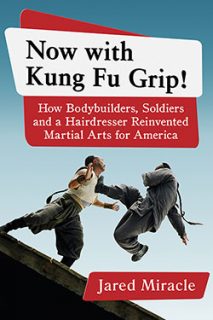My News and Reviews
Last week at Experiments in Manga I posted an in-depth review of Ichi-F: A Worker’s Graphic Memoir of the Fukushima Nuclear Power Plant by Kazuto Tatsuta. It’s an important and fascinating manga which reveals the day-to-day lives and work of the people who are directly involved with the ongoing cleanup following the 2011 earthquake, tsunami, and nuclear disasters in Japan. On a related note, a while back I also reviewed Lucy Birmingham and David McNeill’s Strong in the Rain: Surviving Japan’s Earthquake, Tsunami, and Fukushima Nuclear Disaster which provides a fairly comprehensive and approachable overview of the disasters themselves as well as some of the initial recovery efforts. As for future in-depth reviews, I’m currently working on one for Akira Himekawa’s The Legend of Zelda: Twilight Princess, Volume 1 which I hope to post sometime later this week. (That would mean two reviews from me this month!) Initially I was planning to write a quick take on Nagabe’s The Girl from the Other Side, Volume 1 for today’s post, but I loved it so much that I want to delve into it more deeply, so expect to see a more comprehensive review for that manga in the relatively near future as well.
Quick Takes
 Erased, Omnibus 1 (equivalent to Volumes 1-2) by Kei Sanbe. Although I haven’t actually watched it yet, Sanbe’s Erased manga was first brought to my attention due to its recent anime adaptation. I’ve heard very good things about it and so when Yen Press started releasing the original manga in a hardcover, omnibus edition it immediately caught my attention. Satoru Fujinuma has a peculiar ability which causes him to spontaneously travel back in time. Usually it happens just before some tragedy is about to occur, allowing him to try to prevent it, although doing so can sometimes cause problems for him personally. When a particularly traumatic event occurs, Satoru unexpectedly finds himself nearly two decades in his past, giving him the opportunity to try to stop a series of kidnappings and murders that haunted his childhood. While I found the story’s premise intriguing from the very start, it actually took me a little while to get into Erased. But by the end of the first volume I was hooked and by the end of the first omnibus I couldn’t wait to read more. (Also, fun fact!: Sanbe was one of Hirohiko Araki’s assistants and worked on JoJo’s Bizarre Adventure.)
Erased, Omnibus 1 (equivalent to Volumes 1-2) by Kei Sanbe. Although I haven’t actually watched it yet, Sanbe’s Erased manga was first brought to my attention due to its recent anime adaptation. I’ve heard very good things about it and so when Yen Press started releasing the original manga in a hardcover, omnibus edition it immediately caught my attention. Satoru Fujinuma has a peculiar ability which causes him to spontaneously travel back in time. Usually it happens just before some tragedy is about to occur, allowing him to try to prevent it, although doing so can sometimes cause problems for him personally. When a particularly traumatic event occurs, Satoru unexpectedly finds himself nearly two decades in his past, giving him the opportunity to try to stop a series of kidnappings and murders that haunted his childhood. While I found the story’s premise intriguing from the very start, it actually took me a little while to get into Erased. But by the end of the first volume I was hooked and by the end of the first omnibus I couldn’t wait to read more. (Also, fun fact!: Sanbe was one of Hirohiko Araki’s assistants and worked on JoJo’s Bizarre Adventure.)
 The Legend of Zelda: Oracle of Seasons/Oracle of Ages by Akira Himekawa. Despite being a fan of The Legend of Zelda, I haven’t actually read very many of the video games’ manga adaptations. However, the Legendary Edition of Himekawa’s The Legend of Zelda manga that Viz Media has recently begun releasing may very well change that. With the handsome book designs, larger trim, color pages, and previously unreleased material, the new edition of the series is tremendously appealing. Oracle of Seasons/Oracle of Ages is the second volume in the Legendary Edition to be released, adapting the two linked video games of the same name. I haven’t actually played the Oracle games so I can’t comment on the adaptation itself, but the manga is fun and energetic. The series is aimed at younger readers which isn’t inherently a bad thing, but the story and characters can occasionally come across as somewhat simplistic as a result. The antagonists in particular seem to lack nuance and tend to be evil for evil’s sake. But as a whole the Oracle manga are enjoyable adventures, following a young Link, a warrior of destiny but still a knight-in-training, as he tries to figure out what he wants to do with his life even while he’s saving the kingdom.
The Legend of Zelda: Oracle of Seasons/Oracle of Ages by Akira Himekawa. Despite being a fan of The Legend of Zelda, I haven’t actually read very many of the video games’ manga adaptations. However, the Legendary Edition of Himekawa’s The Legend of Zelda manga that Viz Media has recently begun releasing may very well change that. With the handsome book designs, larger trim, color pages, and previously unreleased material, the new edition of the series is tremendously appealing. Oracle of Seasons/Oracle of Ages is the second volume in the Legendary Edition to be released, adapting the two linked video games of the same name. I haven’t actually played the Oracle games so I can’t comment on the adaptation itself, but the manga is fun and energetic. The series is aimed at younger readers which isn’t inherently a bad thing, but the story and characters can occasionally come across as somewhat simplistic as a result. The antagonists in particular seem to lack nuance and tend to be evil for evil’s sake. But as a whole the Oracle manga are enjoyable adventures, following a young Link, a warrior of destiny but still a knight-in-training, as he tries to figure out what he wants to do with his life even while he’s saving the kingdom.
 Samejima-kun and Sasahara-kun by Koshino. Currently, Samejima-kun and Sasahara-kun is the only boys’ love manga by Koshino to have been released in English in print, but I enjoyed it so much that I hope there will one day be more translated. For a while there Samejima-kun and Sasahara-kun had gone out-of-print, but it’s more-or-less available again. (Digital Manga seems to be using some sort of print-on-demand service to restock titles lately; sadly, though adequate, the production quality isn’t quite as good.) Samejima and Sasahara are both college classmates and coworkers at a convenience store. Everything seemed to be going along fine between them until Samejima confesses that he has fallen in love with Sasahara, thereby putting their friendship in danger. At first Sasahara tries to ignore the development, wanting to just remain friends, but he comes to realize he enjoys the attention, if only he could get Samejima to believe him. Their relationship (as well as the eventual sex they have together) is endearingly awkward–Samejima obviously cares about Sasahara and vice versa, but they also annoy the hell out of each other in a way that only the closest friends can do. They’re an argumentative couple, but the manga’s humor makes it work.
Samejima-kun and Sasahara-kun by Koshino. Currently, Samejima-kun and Sasahara-kun is the only boys’ love manga by Koshino to have been released in English in print, but I enjoyed it so much that I hope there will one day be more translated. For a while there Samejima-kun and Sasahara-kun had gone out-of-print, but it’s more-or-less available again. (Digital Manga seems to be using some sort of print-on-demand service to restock titles lately; sadly, though adequate, the production quality isn’t quite as good.) Samejima and Sasahara are both college classmates and coworkers at a convenience store. Everything seemed to be going along fine between them until Samejima confesses that he has fallen in love with Sasahara, thereby putting their friendship in danger. At first Sasahara tries to ignore the development, wanting to just remain friends, but he comes to realize he enjoys the attention, if only he could get Samejima to believe him. Their relationship (as well as the eventual sex they have together) is endearingly awkward–Samejima obviously cares about Sasahara and vice versa, but they also annoy the hell out of each other in a way that only the closest friends can do. They’re an argumentative couple, but the manga’s humor makes it work.
 Now with Kung Fu Grip!: How Bodybuilders, Soldiers and a Hairdresser Reinvented Martial Arts for America by Jared Miracle. It would be understandable, if inaccurate, to assume from its title and description that Miracle’s Now with Kung Fu Grip! is a work of popular history. I personally found the subject matter to be interesting and learned quite a bit, however the book is difficult to recommend to a casual reader. While Miracle’s style of writing isn’t overly academic, it is incredibly dense and as a whole the volume seems unfocused. Most people will do well to simply read the book’s conclusion which provides an adequate summary, foregoing the rest of the content unless more explicit detail is desired. The cover image, taken from the Chinese martial arts film Fearless, is somewhat misleading as well as the book is almost exclusively devoted to Japanese martial arts and the ways in which they’ve been incorporated into American culture. Now with Kung Fu Grip! is less about martial arts themselves and more about their social and historical contexts and the mythologies and stories that practitioners construct around them. In particular, Miracle ties the evolution of Japanese martial arts traditions in America to their commercialization and to the changing interpretations and expectations of idealized American masculinity over time.
Now with Kung Fu Grip!: How Bodybuilders, Soldiers and a Hairdresser Reinvented Martial Arts for America by Jared Miracle. It would be understandable, if inaccurate, to assume from its title and description that Miracle’s Now with Kung Fu Grip! is a work of popular history. I personally found the subject matter to be interesting and learned quite a bit, however the book is difficult to recommend to a casual reader. While Miracle’s style of writing isn’t overly academic, it is incredibly dense and as a whole the volume seems unfocused. Most people will do well to simply read the book’s conclusion which provides an adequate summary, foregoing the rest of the content unless more explicit detail is desired. The cover image, taken from the Chinese martial arts film Fearless, is somewhat misleading as well as the book is almost exclusively devoted to Japanese martial arts and the ways in which they’ve been incorporated into American culture. Now with Kung Fu Grip! is less about martial arts themselves and more about their social and historical contexts and the mythologies and stories that practitioners construct around them. In particular, Miracle ties the evolution of Japanese martial arts traditions in America to their commercialization and to the changing interpretations and expectations of idealized American masculinity over time.

Speak Your Mind